For adventurous travelers who love the outdoors, hiking from Gubeikou Great Wall (古北口长城) to Jinshanling Great Wall (金山岭长城)is a breathtaking journey through both nature and history. This scenic trail connects two distinct sections of the Great Wall.
Gubeikou remains wild and weathered, offering a raw, authentic look at the Wall’s ancient past. In contrast, Jinshanling features restored battlements that showcase the Wall’s grandeur at its peak. Together, they offer a perfect blend of untamed beauty and architectural splendor.
This guide will walk you through everything you need to know — from transportation and route planning to safety tips and cultural insights. Whether you’re a seasoned trekker or a curious explorer, this 12-kilometer hike promises to be an unforgettable experience.
Let’s get you ready to step back in time, one stone at a time.
1. Itinerary Overview & What to Pack
🗺️ Trail Overview
The Gubeikou to Jinshanling Great Wall hike covers about 12 kilometers in a straight line, but expect to walk closer to 14–15 kilometers due to detours and uneven terrain.
You’ll need around 6 to 8 hours to complete the hike, depending on your pace and how often you stop for rest or photos.
This is a moderate-level hike, but don’t underestimate it. Some sections are badly weathered and require you to detour around a military zone. The trail isn’t technically difficult, but endurance and careful footing are important.
🌤️ Best Time to Go
Plan your hike in spring (April–May) or autumn (September–October). These seasons offer the best weather and stunning views.
Avoid summer—the Great Wall gets very hot and has little shade. Winter can be harsh, icy, and not ideal for long treks.
🎒 Essential Packing List
Make sure you’re fully prepared. There are no shops or water stations along the trail, and cell signal is limited in some parts.
✅ Footwear
- Wear sturdy high-ankle hiking boots to protect against the uneven Great Wall bricks and loose stones.
✅ Clothing
- Dress in layers. Go for a quick-dry base layer, a warm mid-layer, and a windproof jacket. Mountain weather can change fast.
✅ Water & Food
- Bring at least 3 liters of water per person.
- Pack high-energy snacks like nuts, trail mix, or energy bars to keep your energy up.
✅ Navigation Tools
- Download offline maps (we recommend the Two-Step GPS app) and carry a paper map as a backup. GPS isn’t always reliable in remote sections.
✅ Sun Protection
- Pack a hat, sunglasses, and sunscreen. There’s no shade along most of this Great Wall route.
✅ Other Essentials
- Headlamp or flashlight (in case you finish late)
- Basic first-aid kit
- Passport or ID
- Trash bag – leave no trace on the Wall
2. How to Get to Gubeikou Great Wall (and Back from Jinshanling)
Getting to the Gubeikou Great Wall starting point from central Beijing is fairly straightforward. You have a few different options depending on your budget and travel style.

🚆 By Train (Most Scenic & Affordable)
Take the S501 train from Beijing North Railway Station. It departs at 6:55 AM and arrives at Gubeikou Station at 9:23 AM. Tickets cost only 12 RMB.
From the train station, hop in a local taxi to the trailhead. The ride takes about 15 minutes and is the easiest way to start your self-guided Great Wall hike.
🚌 By Long-Distance Bus (Budget Option)
- From Dongzhimen Transport Hub, take the 980 Express Bus to Miyun Bus Station. This leg takes around 1.5 hours.
- Then transfer to a local minibus heading to Gubeikou Town. That’s another 1 hour ride.
This route is more hands-on and may involve waiting or asking locals for directions. Brush up on a few basic Chinese travel phrases, just in case!
🚗 By Private Car or Taxi (Most Convenient)
If you want comfort and a direct route, consider hiring a car or taxi from Beijing. The drive takes about 2.5 hours, depending on traffic.
Expect to pay 400–600 RMB one-way, which can be shared if you’re traveling with a group. This is the best option if you’re short on time or prefer a smoother trip.
🚐 Getting Back from Jinshanling Great Wall
At the end of your hike, you’ll exit near the Jinshanling Scenic Area. On weekends and public holidays, a shuttle bus leaves for Beijing at 16:00. Be sure to check the latest schedule in advance and arrive early to secure a seat. It is too late, you’d better stay overnight in Jinshanling Great Wall Hotel.
For more transfer information, please check out: How to Get to Gubeikou Great Wall and How to Get to Jinshanling Great Wall.
3. Drive from Beijing to Gubeikou Village
Our adventure began with an early morning departure from the bustling streets of downtown Beijing. Accompanied by our driver, Mr. Liu, we embarked on a serene drive towards Gubeikou Village ( the seat of the Gubeikou Town). The route took us along the Jingcheng Expressway, a path that quickly transitioned from the urban landscape to the idyllic countryside, marking our escape from the city’s clutches into a realm of tranquility.
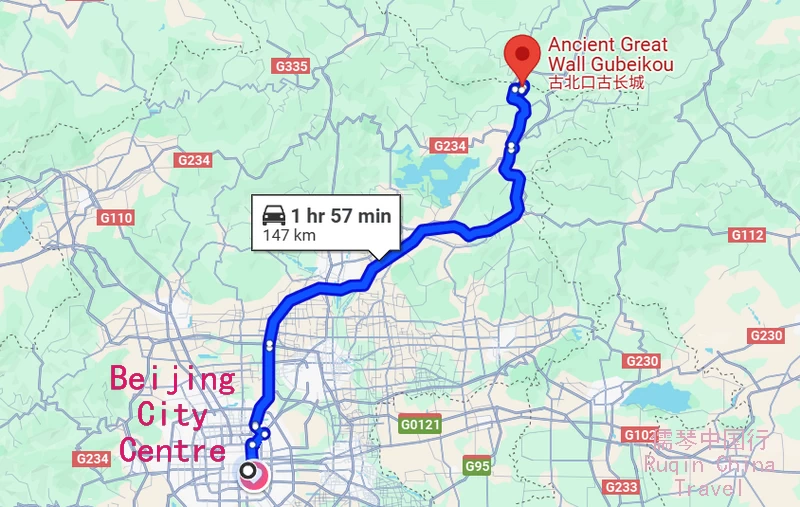
Exiting the expressway at Simatai Great Wall Exit, a mere 100 meters from the toll gate, we turned left at the first traffic light, signaling our approach to Gubeikou (古北口).
The signage at the junction offered a clear choice: right towards Simatai Great Wall, and straight ahead along G101 for Gubeikou. Opting for the latter, we found ourselves on a picturesque 10km drive through quaint villages, each a small capsule of rural life, leading us to the historical Gubeikou Town (古北口镇). This 135km journey from Beijing, taking approximately two hours, was a gradual introduction to the raw beauty and peaceful ambiance that would define our hike.
4. Gubeikou Great Wall at Panlongshan and Wohushan
Upon arriving at the foot of Gubeikou Great Wall, nestled within the charming Gubeikou Village, we were greeted by a landscape that whispered tales of ancient times. We met Mr. Wang Jian, the deputy director of Gubeikou Scenic and Cultural Heritage Tourism. Through his narratives, we delved into the storied past of this historic site.
Gubeikou Great Wall, as Mr. Wang explained, has been a significant military stronghold for over a millennium. Originally, it comprised four sections of the Great Wall – Simatai, Jinshanling, Panlongshan, and Wohushan – stretching over 20 kilometers with more than 143 watch and beacon towers. These names, he mentioned, were more recent, coined about 20 years ago to distinguish the different sections for tourism and administrative purposes.
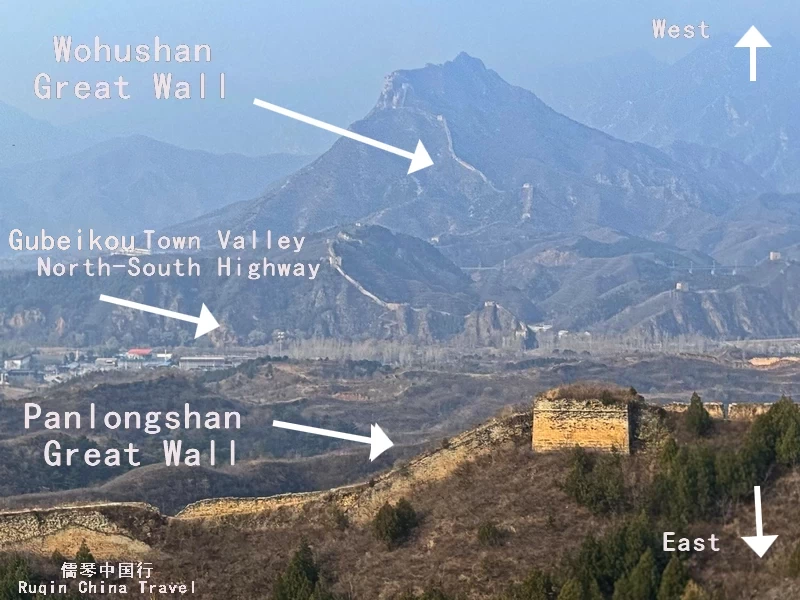
Today’s Gubeikou encompasses two main parts – the Panlongshan Great Wall and Wohushan Great Wall. Panlongshan, translating to Coiled Dragon Mountain, and Wohushan, meaning Crouching Tiger Mountain, face each other, framing a valley that once served as a strategic passage between Inner Mongolia and Beijing. This valley now cradles the rapidly developing Gubeikou Town.
The entrance to Panlongshan Great Wall, popularly known as Gubeikou Great Wall, lies within Gubeikou Village – one of the most picturesque villages around Beijing. We learned that there are two paths to commence our hike: one official and the other, a more challenging and less trodden path, which we chose, seeking the thrill of exploration.
Wohushan Great Wall is officially closed to the public due to its rugged and unrestored condition. So when we talk about hiking the Gubeikou Great Wall, we’re actually referring to the Panlongshan section, which is accessible and commonly included in this route.
5. Gubeikou Great Wall: Two Parallel Sections
The Gubeikou Great Wall here comprises two parallel sections: one from the Northern Qi Dynasty (550 to 577 ), made largely of mud, and the other from the Ming Dynasty (1368 to 1644 ), constructed with stone. This duality offered a unique perspective on the Wall’s evolution over centuries.
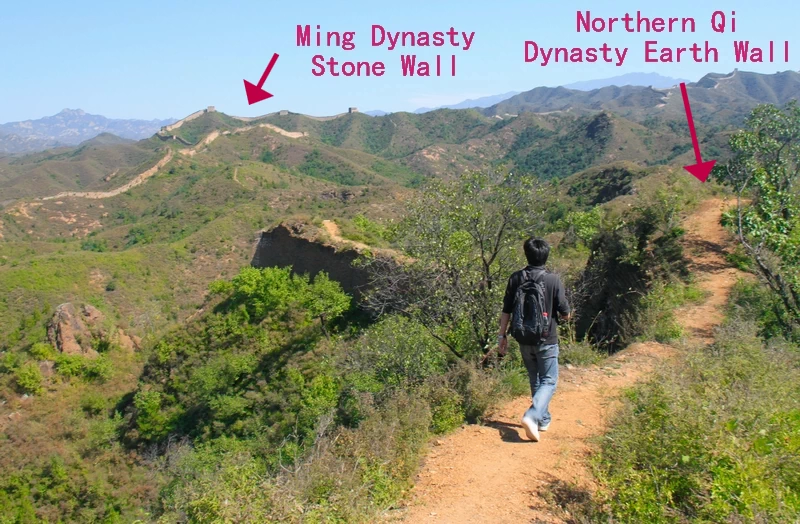
The beginning of our hike at Gubeikou set the tone for what was to be an unforgettable experience. We chose the less official path starting the mud Great Wall, a decision that promised a more authentic and raw encounter with the Great Wall. The entrance fee was a modest 25 RMB each, a small price for the impending adventure. Interestingly, our tickets remained unchecked throughout the hike, a testament to the path’s off-the-beaten nature.
6. Starting the Hike – Northern Qi Dynasty Wall (Tamped Earth Wall)
The Gubeikou Great Wall, often referred to as the Panlongshan section, actually includes two parallel walls. One is the earthen wall from the Northern Qi Dynasty. The other is the stone wall built during the Ming Dynasty.
We’ll start the hike on the tamped earth wall first. Later, we’ll switch to the stone wall for a more challenging climb to the Ming Dynasty Wall.
But here’s the twist—this starting point isn’t on any official tourist map. There’s no gate, no signboard, and no ticket office.
So, how do you begin with the Northen Qi Dynasty Earth Wall?
Well, experienced hikers have marked the way. Some even painted colored arrows to help fellow adventurers. After a bit of wandering, we finally spotted the blue trail mark and knew we were on the right path.
🟢 How to Find the Green Arrow
From the main street of Gubeikou Village, walk southeast. Looking for the road sign, after you pass the Caishen Temple (财神庙), keep your eyes on the walls and fences nearby. Look for a faded blue arrow—it was painted by foreign hikers and still points the way.
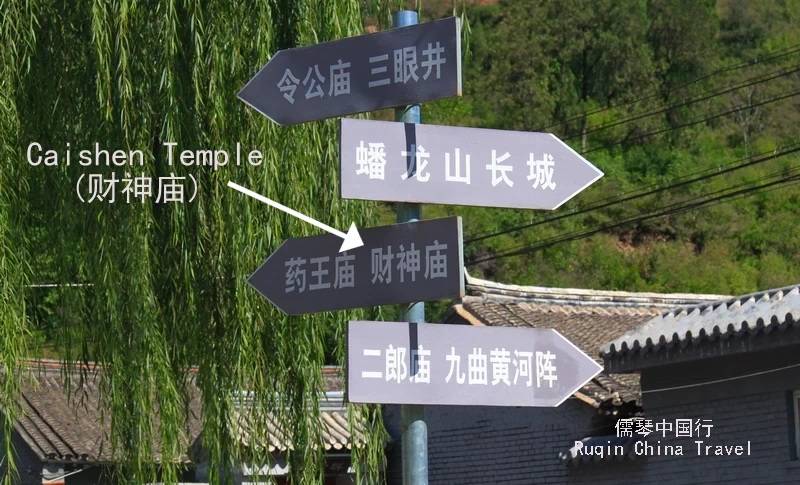
It may be partially worn or hard to spot, so go slowly and stay observant. Once you find it, you’re on the right track to start your Great Wall hike through the wild Northern Qi section.
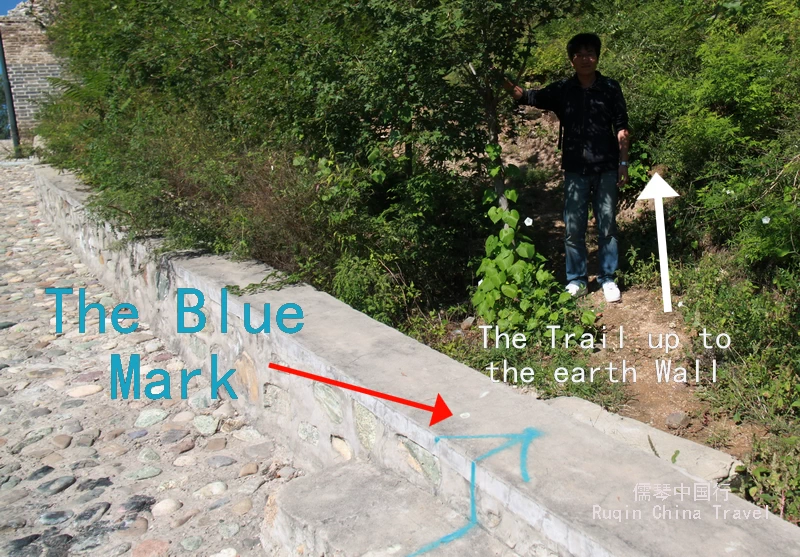
7. From Earth to Stone: Hiking from the Mud Wall to the Ming Wall
As we hiked along the Panlongshan section of the Great Wall, something unique unfolded. Two ancient walls ran shoulder to shoulder—one built with earth during the Northern Qi Dynasty (550–557), the other crafted from stone by the early Ming Dynasty (1368–1644).

Our journey began on the older of the two—the Northern Qi wall, made almost entirely of tamped earth. Without stone battlements or steps, it felt more like climbing a ridge than walking on the Great Wall. But that made it all the more surreal.
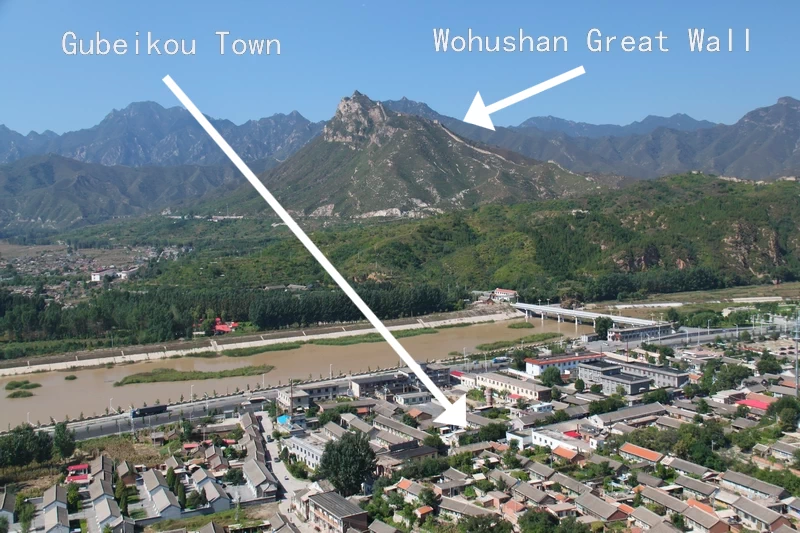
From the top of one of these mounds, we paused to take it all in. The view was stunning. To the west, we spotted the Wohushan Great Wall, untouched and wild, snaking across the hills like a forgotten relic. Below us, Gubeikou Village sat quietly in the valley, embraced by these layers of history.
Here, the two walls of different dynasties seemed to engage in a silent conversation—one raw and weathered, the other bold and structured. It was like walking through a living timeline.
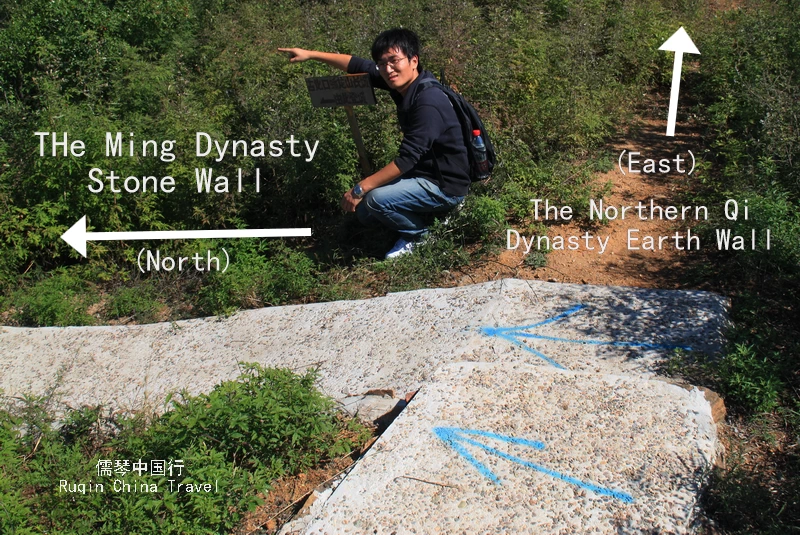
Eventually, we reached a signboard with a blue arrow—our cue to leave the Qi wall and head toward the Ming Dynasty section. This marked the start of a new challenge: a descent into a deep valley, followed by a climb up the northern ridge.
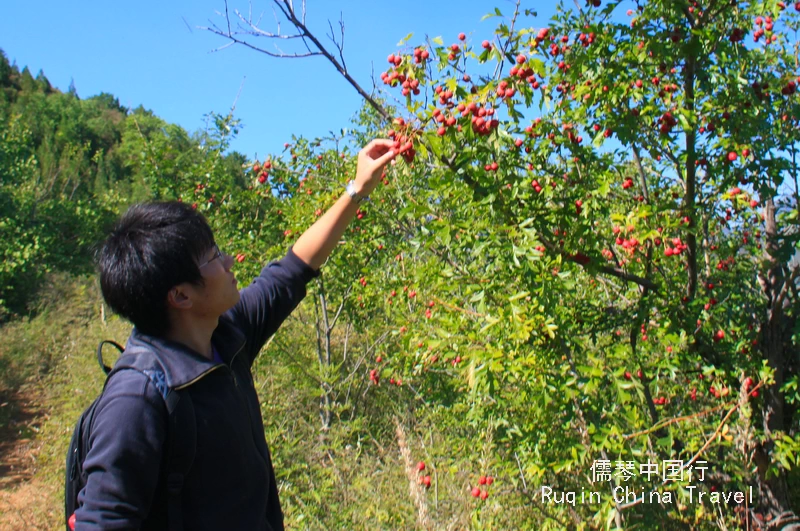
At first, the valley felt daunting. The trail was narrow, bushy, and zigzagged up the slope. But to our surprise, it became one of the most memorable parts of the hike.
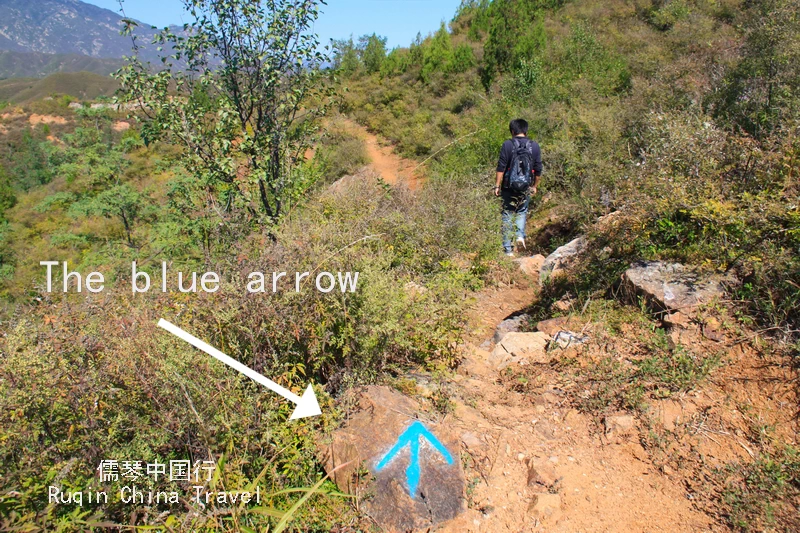
All around us were jujube and hawthorn trees, their branches heavy with ripe fruit. We picked a few as we walked, the sweet and sour bites giving us a welcome boost. Those little moments—tasting fresh fruit in the middle of nowhere—made the tough climb feel joyful.
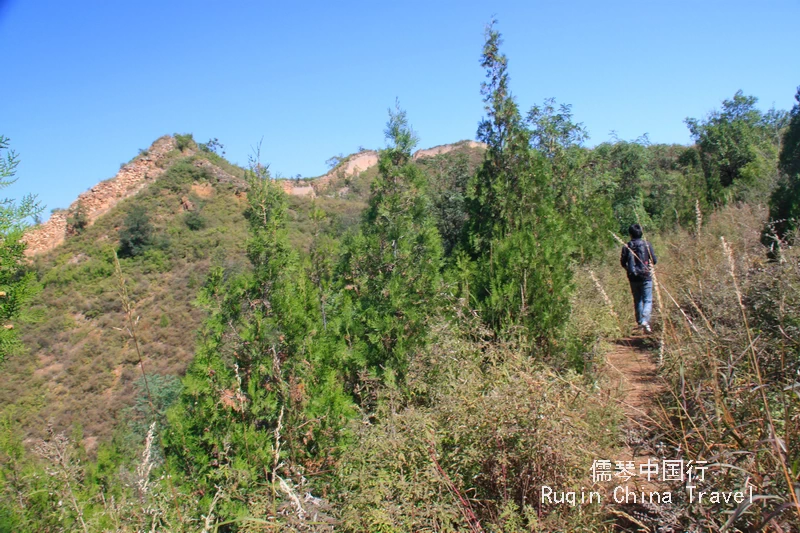
After about 30 minutes, we cleared the valley and emerged onto the Ming Dynasty Great Wall. The switch from earth to stone was striking. The walls rose higher, and the path grew steeper. Our real adventure was just beginning.
8. Highlights Along the Wild Wall – Gubeikou’s Untamed Beauty
The trail from Gubeikou to Jinshanling is not just a hike. It’s an expedition through time—raw, rugged, and incredibly rewarding.
As we pressed on, the Wall turned wilder. Grass sprouted through cracks in the bricks. Shrubs spilled over the path. Trees grew straight out of the towers. Nature had reclaimed much of this ancient route, and we were walking straight through it.
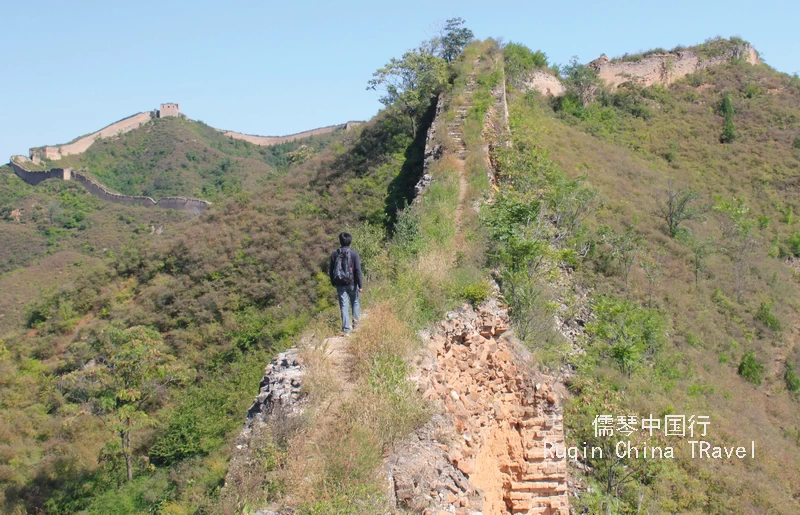
The terrain constantly shifted. One moment we were scrambling up a steep incline, grabbing at worn stones for support. The next, we were descending loose slopes, our boots crunching through dust and rubble. The Wall here is completely unrestored—no handrails, no smooth steps, just history under your feet.
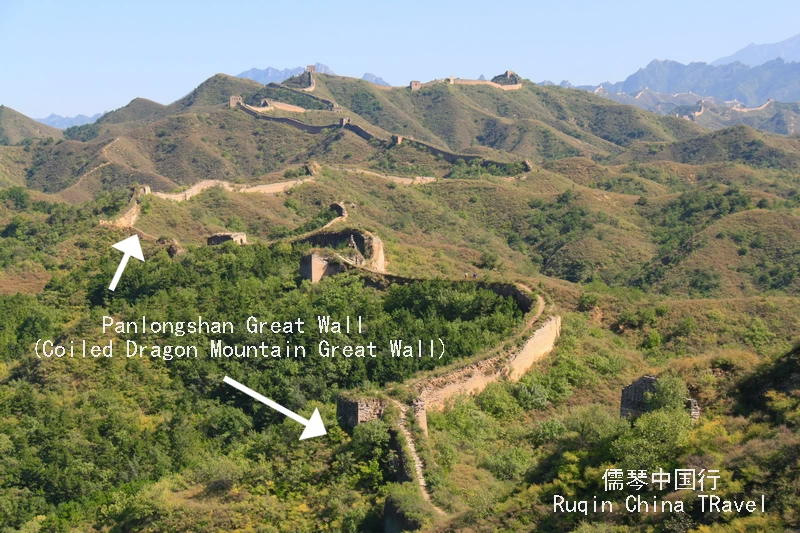
After a tough climb, we reached the General Tower. We stood still, trying to catch our breath—and then the view hit us. From this high perch, we could see the Wohushan Great Wall stretching west in jagged lines. Gubeikou Town rested quietly below, wrapped in the embrace of hills and walls. And ahead, the long spine of the Panlongshan Great Wall continued east like a sleeping dragon.
The wind was strong up there, and everything felt vast and silent. It was one of those moments that makes the sweat worth it.
We moved on toward the 24-Eye Tower, the final accessible point before the military zone. You can’t go further along the Wall itself—the area beyond is off-limits. But just reaching this tower felt like a triumph.
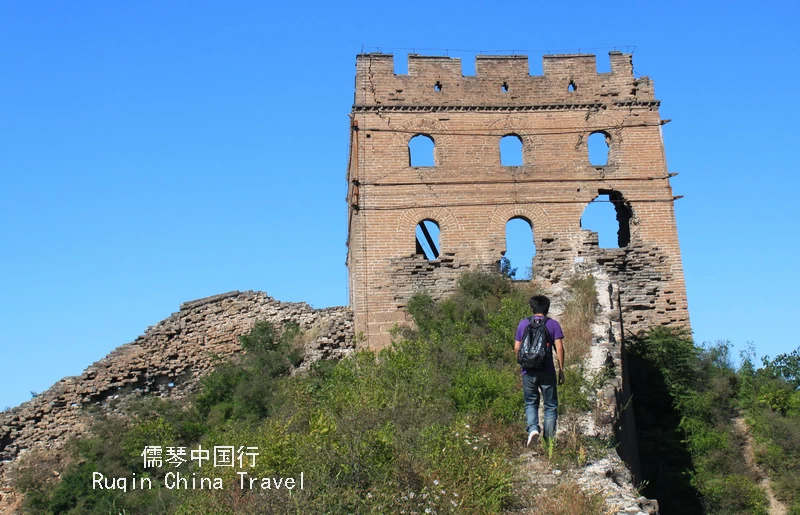
The tower’s design is rare. It features 24 small observation windows, each perfectly placed to scan for distant enemies. Inside, light filtered through the holes like stars in an old sky. The walls were crumbling, but still standing. Just like the memory of what this place once was.
From here, we had to make a detour around the military zone. Another descent into a hidden valley. Then came the climb—a three-hour hike through thick brush and winding mountain paths. The Wall occasionally appeared beside us, like an old guide checking in. We followed it from a distance, always upward.
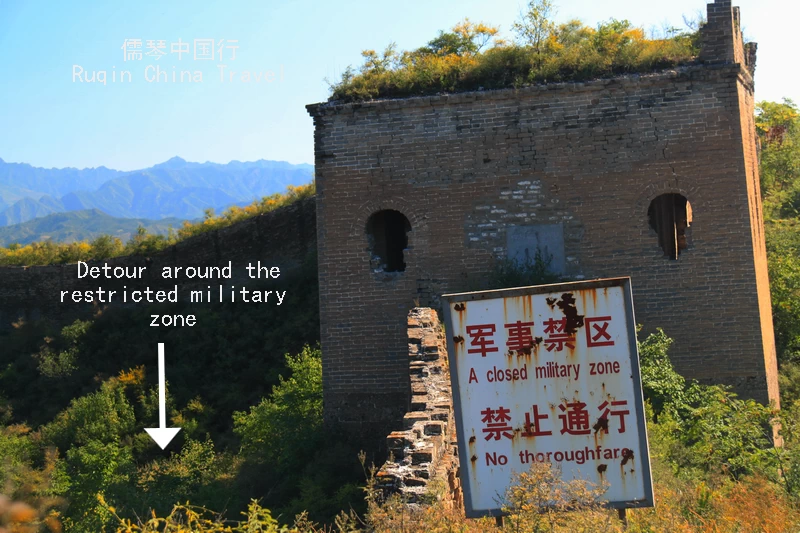
That section was tough—hot, exposed, and full of uneven terrain. But there were small joys. Birds chirping above. Wild jujube trees dropping fruit. A quiet breeze sweeping the valley. The Great Wall of China, once the line between empires, was now our hiking trail.
As we climbed the final stretch toward Jinshanling, we looked back. The Gubeikou Wall stood behind us—wild, silent, and unforgettable.
9. Lost in the Wild – The Journey Through the Valleys and Mountains
This was the toughest part of the hike. No question about it.
We left the final tower at Gubeikou, knowing we had to detour around the restricted military zone. That meant leaving the Wall entirely and entering the wild. No battlements. No guideposts. Just us, the mountains, and uncertainty.
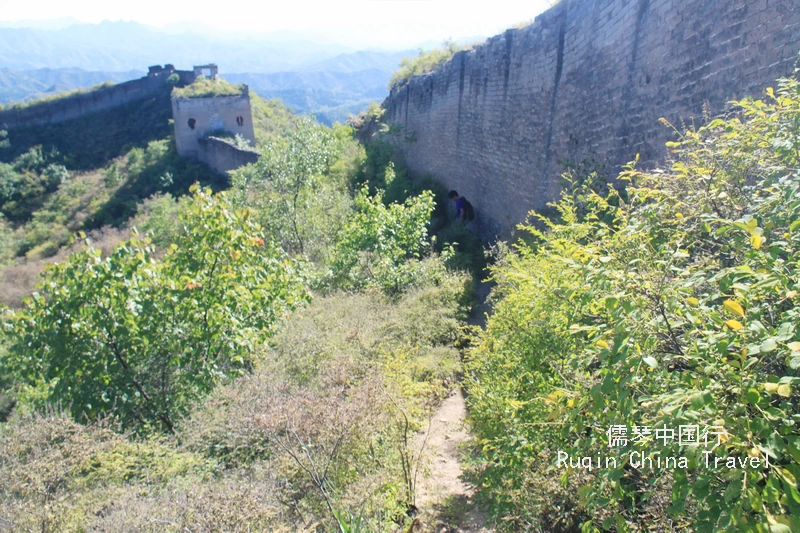
We descended once again into a valley—our second of the day, and by far the most challenging. This wasn’t a maintained trail. The path was muddy, overgrown, and often invisible. No blue arrows, no signs. At times, we couldn’t even see the Great Wall. Just endless hills, thorny bushes, and a sense of being completely off-grid.
We moved slowly, carefully, trying to follow what looked like a footpath. But every turn brought doubts. Were we still on the right track? Were we even heading east?
The valley was dense. Branches scratched at our clothes, and our boots sank into soft earth. The trail zigzagged through thickets and tall grass. A few times, we stopped in silence, trying to listen—hoping for voices, signs, anything.
Instead, we heard only the rustle of leaves, maybe a bird, maybe something else. It was beautiful. And a little terrifying.

Suddenly, the wall of green opened up. In front of us—a cornfield. Golden stalks swayed in the breeze, and a group of farmers were harvesting by hand, quietly working under the afternoon sun. We paused, watched in awe. It was like stepping into a slower world, untouched by time.
Here, under the shadow of the ancient Wall, modern life carried on. These fields weren’t ruins or tourist spots. They were real, alive, and humble. It was a moment of quiet reflection—history, nature, and human resilience, all blending together.
But the sense of peace didn’t last long. The trail disappeared again. We looked around. Still no arrows. No clear path. We were in private farmland, and we later learned that signs aren’t allowed there.
We were completely lost.
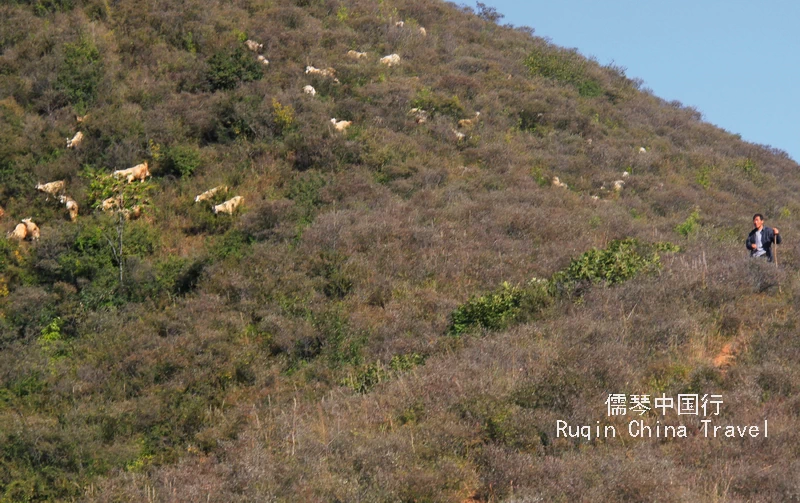
Thankfully, we met Mr. Zhou, a local farmer tending his goats nearby. Weathered by the sun, quiet but kind, he offered us directions—and even his phone number in case we got lost again. He’d walked these valleys all his life. To him, this maze of fields and forests was home. To us, it was a lifeline.
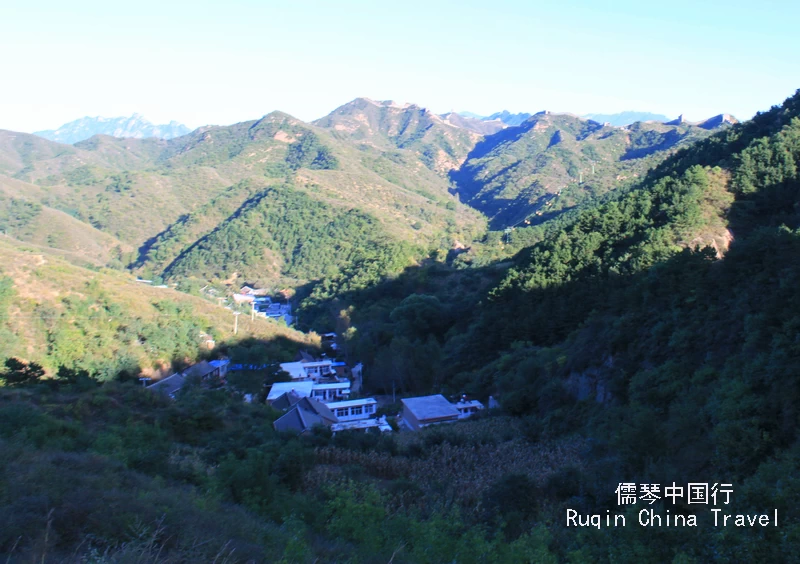
With his help, we climbed the final ridge. Our legs were aching, and we were drenched in sweat. But then, through a break in the trees, we saw it: Jinshanling Hotel, nestled in the valley far below.
We had made it.
After hours of being off-trail, through valleys, cornfields, mountains and silence, the sight of that small hotel felt like a victory. The wildness of Gubeikou had tested us—but in the end, it gave us the kind of adventure that stays with you for life.
10. Chasing the Sunset – Our Final Push on the Jinshanling Great Wall
After nearly six relentless hours of hiking from Gubeikou through valleys, fields, mountains and forgotten trails, we finally reached Jinshanling Great Wall at 5:00 PM. We were utterly spent. Every step felt like lifting a stone. Our legs throbbed, our backs ached, and the thought of climbing one more ridge seemed impossible.
But then—we saw the light. Literally.
The ticket collector pointed to the horizon and warned us:
“The sun sets in 20 to 30 minutes. If you miss it, that’s it.”
That was all it took. We exchanged exhausted glances, nodded silently, and pushed forward. No time for rest. No time for hesitation. We were driven by the sunset—one last climb, one final challenge.
We stumbled toward the base of the wall, legs shaking with every step. My muscles were twitching from fatigue, and my knees buckled under me. I collapsed briefly on the roadside, kneading my calves, trying to coax life back into them. But the clock was ticking, and the sun was falling.
With a deep breath, I rose again—limping, dragging, but moving.
The climb onto Jinshanling’s stone steps felt endless. The watchtowers above seemed impossibly far away. My lungs burned, and my heartbeat thudded in my ears. Still, I pressed on—because just beyond those towers was the golden moment I’d come all this way for.
Four towers. No stopping. No second chances.
I passed one… then another… then the third… and finally, the fourth. I reached a high point and saw what we came for.
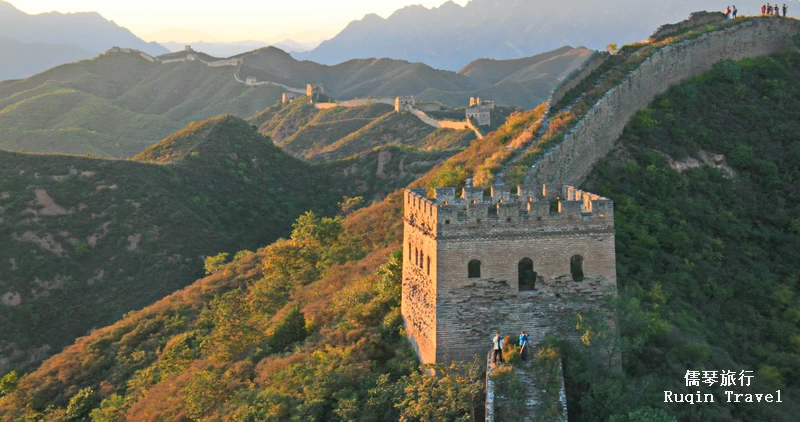
The Wall stretched before me, winding like a dragon’s back into the glowing mountains. The sky exploded in color—fiery orange, deep crimson, soft pink. Photographers dotted the Wall, perching on stone ledges, cameras poised. Their tripods, long lenses, and gear made my humble EOS 500D look like a toy. Still, I felt proud. I had carried it all this way.
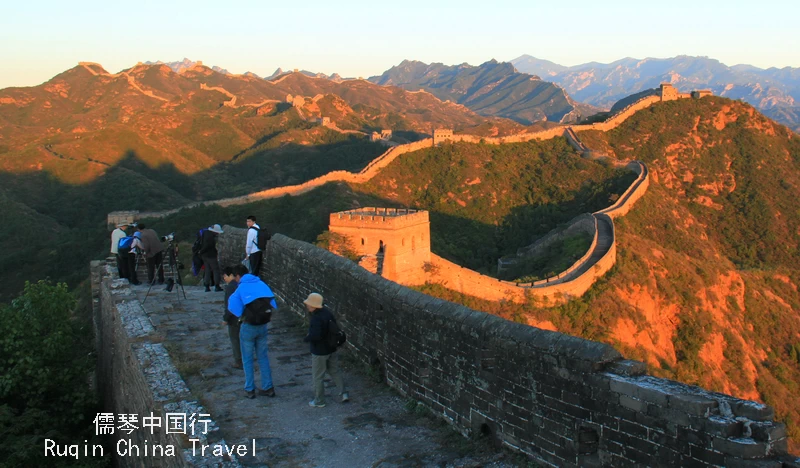
I found my spot—inside a watchtower window—and framed the scene. The Wall glowed under the golden light, its stones catching fire from the last rays of the sun. The red orb slowly dipped, painting everything in brilliant hues. The towers, the ridges, even the sky—it was as if the world had paused to watch this final bow of light.
I clicked. And clicked again.
It didn’t matter that I was surrounded by professionals. My lens was enough. My eyes were enough. I had made it. I had seen it. I had earned it.
The Jinshanling sunset was everything I had imagined—raw, peaceful, unforgettable.
🏯 Great Wall at Gubeikou and Jinshanling Private Sunset Tour
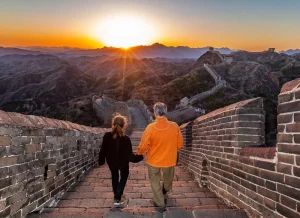
Ready to see the Great Wall in a whole new light? This full-day private tour takes you to two of the Wall’s most scenic—and peaceful—sections: Gubeikou and Jinshanling.
You’ll hike along quiet, dramatic ridgelines and end your day with a golden-hour sunset over the mountains. With round-trip transport from Beijing and lunch included, all you need to bring is your camera and sense of adventure. 📸🌄
👉 Book your Gubeikou & Jinshanling Sunset Tour now !
🌟 Why You’ll Love It:
- 🌅 Golden Hour Views: Watch the sunset from Jinshanling—one of the most photogenic stretches of the Wall.
- 🚶♂️ Uncrowded Hike: Skip the tourist traps and explore a more rugged, peaceful section of the Wall.
- 🚗 Private Transport: Hotel pickup and drop-off in Beijing means zero logistics stress.
- 🍜 Lunch Included: Recharge with a hearty local meal along the way.
- 🧘♀️ Escape the City: A full day to breathe mountain air and experience the wild side of Beijing.
A Journey Etched in Stone and Soul
Hiking from Gubeikou to Jinshanling isn’t just a trek. It’s a journey through time, history, and the raw beauty of northern China.
As we stood on Jinshanling’s ancient stones, watching the sun dip behind the mountains, we felt more than tired—we felt transformed.
This hike goes far beyond sightseeing. It challenges your body, stirs your spirit, and immerses you in China’s living history. You climb through forgotten watchtowers, pass through quiet villages, and witness landscapes that shift with every step.
For those who want to see China’s soul beyond the cities, this trail is a must. It’s rugged, real, and unforgettable.
We began as travelers chasing views. We finished with a deeper respect for the Wall, the land, and the people who built it.
The Great Wall didn’t just test us—it welcomed us. And now, a part of it stays with us.

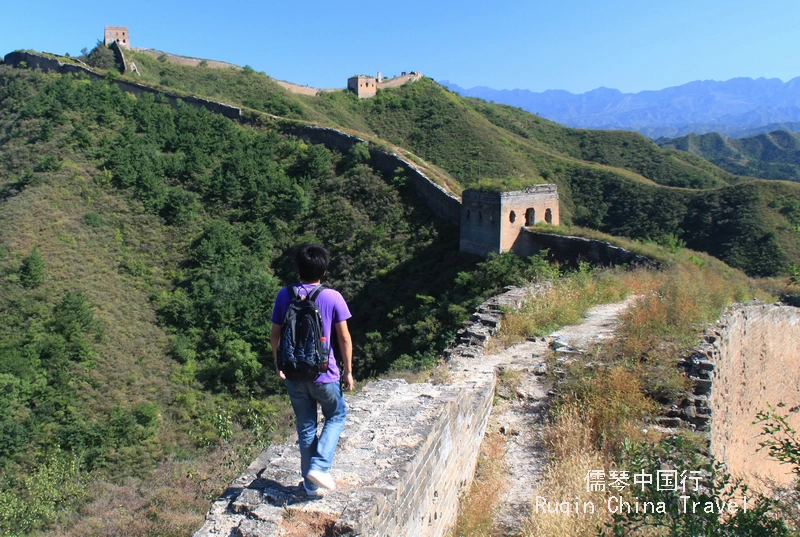
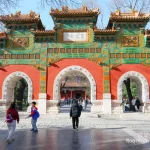
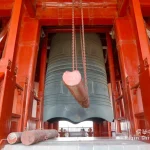
How long did the hike from Gubeikou to Jinshanling take you? Is it possible to complete in a day?
Hi Griffin,
Thanks for reaching out!
Yes, I did the hike from Gubeikou to Jinshanling, and it’s definitely possible to complete in a day—but it’s a challenging one! I started in the morning from Gubeikou, and by the time we reached Jinshanling, we were lucky to catch the sunset over the Jinshanling Great Wall.
Be prepared for a tough trek! My legs were sore for two days afterward. One tricky part is near the end of Gubeikou, where you reach a military zone—you can’t go further along the Wall, so you have to take a shortcut through wild fields and up a mountain and down to reconnect to the base of Jinshanling Great. This means most of the hike isn’t actually on the Jinshanling Wall itself until you reach the official Jinshanling scenic area.
I’d highly recommend going with a local guide or even getting assistance from a local farmer—they know the best routes and can make the experience smoother. The most challenging part is the descent from the Military Zone, crossing fields and climbing over the mountain—this section has almost no signs. Hopefully, you’ll come across a local villager who can point you in the right direction to climb over the mountain and reach the base of the Jinshanling Great Wall.
Let me know if you have any other questions—I’m happy to help!
Best,
Daniel
Thanks Daniel,
Great information you have provided.
Are you able to let me know where you started out the hike from. I’d love to get a specific location as to where to jump onto the hike from Gubeikou as I will be arriving into Gubeikou at around 9.30am.
Cheers
Hi Griffin,
Apologies for the delayed reply, and thanks for your patience!
I’ve just updated the hike guide for the Gubeikou to Jinshanling Great Wall route. You can now find detailed information, including where to start, in this article: How to Hike the Great Wall from Gubeikou to Jinshanling
Hope you have a fantastic time exploring the Gubeikou Great Wall!
Best regards,
Daniel Li
Hi Griffin,
Apologies for the delayed reply, and thanks for your patience!
I’ve just updated the hike guide for the Gubeikou to Jinshanling Great Wall route. You can now find detailed information, including where to start, in this article: How to Hike the Great Wall from Gubeikou to Jinshanling
Hope you have a fantastic time exploring the Gubeikou Great Wall!
Best regards,
Daniel Li